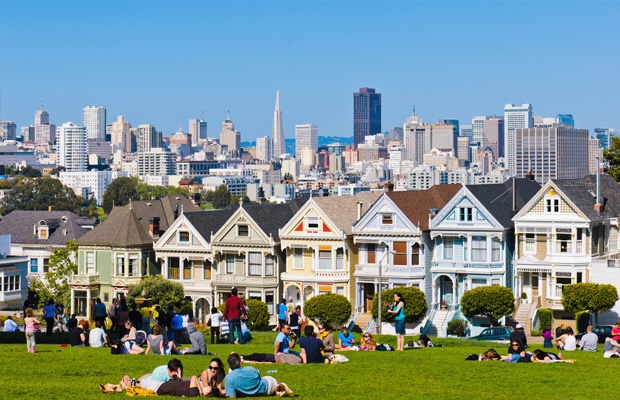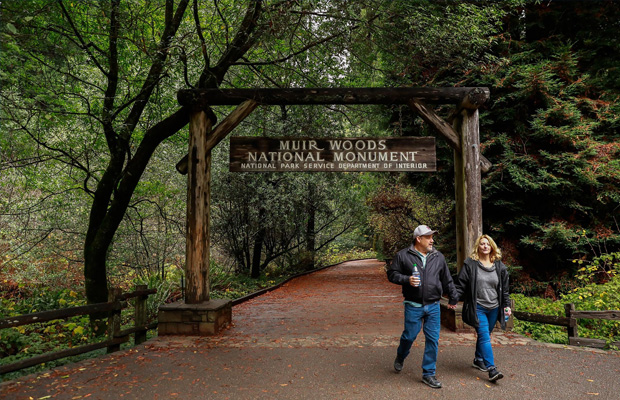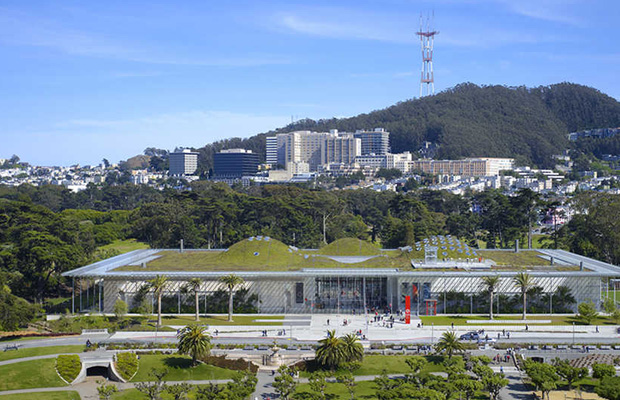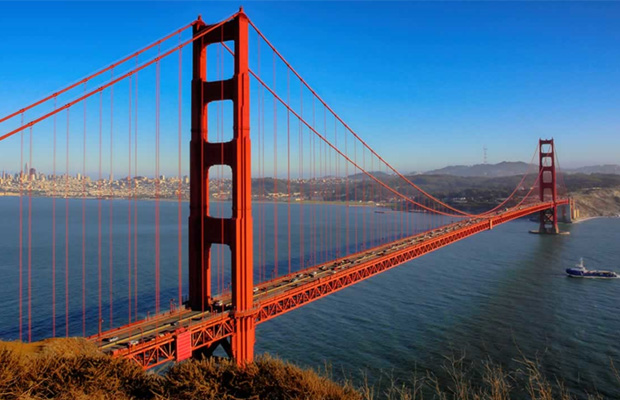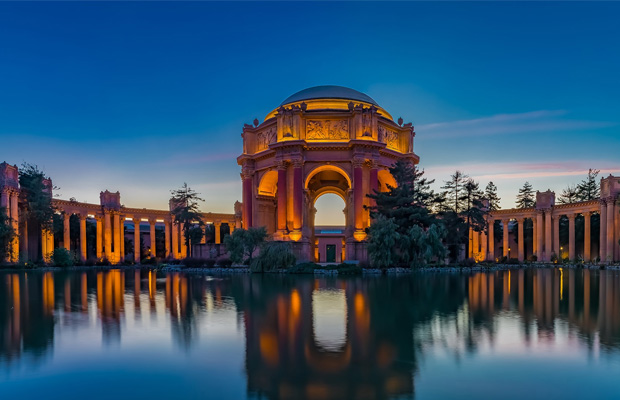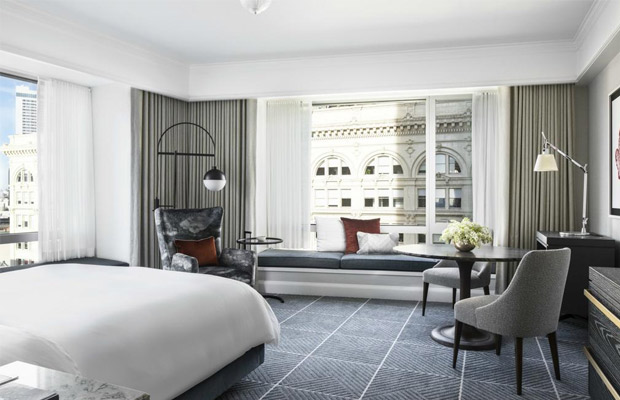The Painted Ladies
The Painted Ladies
USA
San Francisco
San Francisco Travel Guide
Book Tour & Activities
Your tour in San Francisco.
Book your stay
Your hotel in San Francisco.
Overview
In American architecture, painted ladies are Victorian and Edwardian houses and buildings repainted, starting in the 1960s, in three or more colors that embellish or enhance their architectural details.
The term was first used for San Francisco Victorian houses by writers Elizabeth Pomada and Michael Larsen in their 1978 book Painted Ladies: San Francisco's Resplendent Victorians. Although polychrome decoration was common in the Victorian era, the colors used on these houses are not based on historical precedent: Since then, the term has also been used to describe groups of colorfully repainted Victorian houses in other American cities, such as the Charles Village neighborhood in Baltimore; Lafayette Square in St. Louis; the greater San Francisco and New Orleans areas, in general; Columbia-Tusculum in Cincinnati; the Old West End in Toledo, Ohio; the neighborhoods of McKnight and Forest Park in Springfield, Massachusetts; and the city of Cape May, New Jersey.
San Francisco's painted ladies
About 48,000 houses in the Victorian and Edwardian styles were built in San Francisco between 1849 and 1915 (with the change from Victorian to Edwardian occurring on the death of Queen Victoria in 1901), and many were painted in bright colors. As one newspaper critic noted in 1885, "...red, yellow, chocolate, orange, everything that is loud is in fashion ... if the upper stories are not of red or blue ... they are painted up into uncouth panels of yellow and brown ..."[6] While many of the mansions of Nob Hill were destroyed by the 1906 San Francisco earthquake, thousands of the mass-produced, more modest houses survived in the western and southern neighborhoods of the city.
During World War I and World War II, many of these houses were painted battleship gray with war-surplus Navy paint. Another sixteen thousand were demolished, and many others had the Victorian decor stripped off or covered with tarpaper, brick, stucco, or aluminum siding.
In 1963, San Francisco artist Butch Kardum began combining intense blues and greens on the exterior of his Italianate-style Victorian house. His house was criticized by some, but other neighbors began to copy the bright colors on their own houses. Kardum became a color designer, and he and other artists / colorists such as Tony Canaletich, Bob Buckter, and Jazon Wonders began to transform dozens of gray houses into Painted Ladies. By the 1970s, the colorist movement, as it was called, had changed entire streets and neighborhoods. This process continues to this day.
One of the best-known groups of "Painted Ladies" is the row of Victorian houses at 710–720 Steiner Street, across from Alamo Square park, in San Francisco. It is sometimes known as "Postcard Row;" they are also known as the Seven Sisters. The houses were built between 1892 and 1896 by developer Matthew Kavanaugh, who lived next door in the 1892 mansion at 722 Steiner Street. This block appears very frequently in media and mass-market photographs of the city and its tourist attractions and has appeared in an estimated 70 movies, TV programs, and ads, including in the opening credits of the television series Full House and its sequel Fuller House.
Address: Steiner St &, Hayes St, San Francisco, CA 94117, United States
Hours: Closed ⋅ Opens 5AM
Phone: +1 415-218-0259
Video Travel Inspiration
See The Painted Ladies on Map
Most Popular Cities

Siem Reap
Cambodia
Ho Chi Minh City
Vietnam
Beijing
China
Paris
France
London
United Kingdom
New York
USA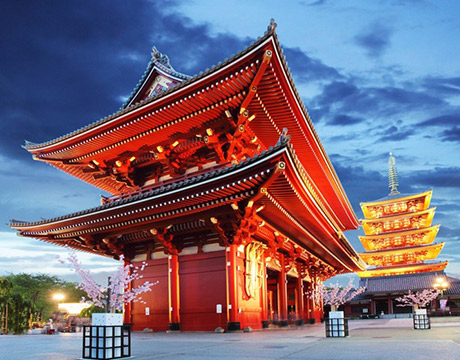
Tokyo
Japan
Bangkok
Thailand
Seoul
South Korea
Vientiane
Laos
Yangon
Myanmar
Washington DC
USA
Los Angeles
USA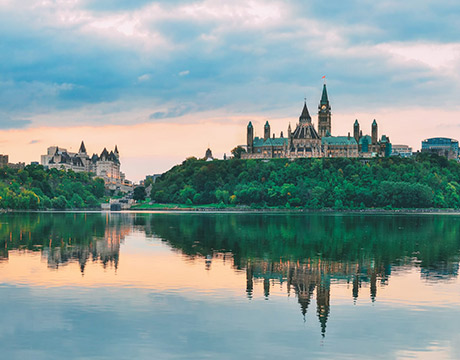
Ottawa
Canada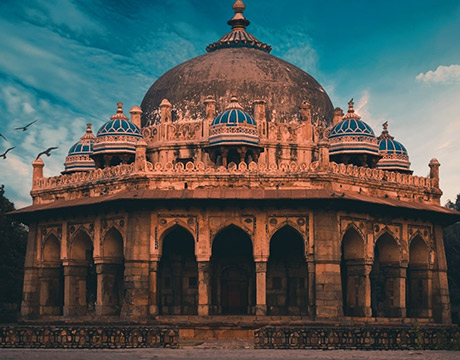
New Delhi
India
Singapore
Singapore
Kuala Lumpur
Malaysia
 English
English French
French Khmer
Khmer Thai
Thai Vietnamese
Vietnamese Chinese
Chinese Korean
Korean German
German Japanese
Japanese Italian
Italian Russian
Russian Spanish
Spanish Dutch
Dutch Indonesian
Indonesian Malay
Malay
